Banding Success!
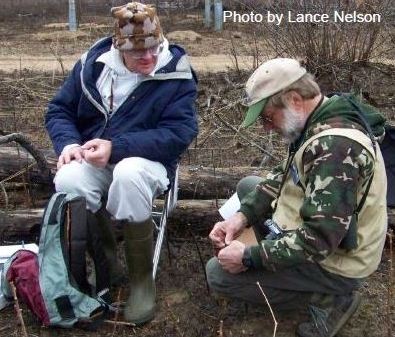
Red-headed Woodpecker Recovery is sponsoring a program to band Red-headed Woodpeckers (RHWOs) at the Cedar Creek Ecosystem Science Reserve. A team of experienced bird banders consisting of Jim Howitz (Lead Bander and Permit holder; near right), Ron Refsnider (Bander; far right) and Lance Nelson have been capturing RHWOs for banding following the North American Bird Banding Program protocols.
In the summer 2011, graduate student, Ari Waldstein, was able to capture and color-band the first Redhead at Cedar Creek, a female, which has been nicknamed "Eve". Eve was our first banded bird! In the spring of 2012 the newly established Banding Team were very successful, as of May 5, 2012 they banded 35 Red-headed Woodpeckers, including at least four pairs. By the end of 2015 the team has banded 144 Red-headed Woodpeckers at Cedar Creek.
The team is using two techniques to capture the birds. They are using baited Potter traps and mist nets. Ron Refsnider has built several mock Potter traps to use along with the actual Potter traps. The mock traps, which allow the bird to easily exit after feeding, are placed on feeding platforms about a week before the planned banding date to get the target birds accustomed to going under wire mesh to get food items. It is baited with peanuts or other nuts. Lance says they really like macadamia nuts. If there is a choice, they always take the macadamia nut first. On banding day the mock trap is replaced with a baited Potter trap.
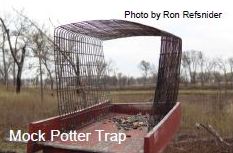
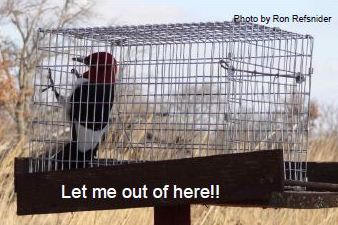
The mist net is 10 feet high and 40 feet long. It is erected with 7-foot extension poles to get it higher into the RHWO's flight pattern. It is placed in RHWO flight avenues near their nesting or roosting cavities. A "boom box" is used to play a RHWO call and drumming directly beneath the center of the net to attract the birds to the vicinity. Experience has allowed better placement of the nets which has given increased success. Lance Nelson says cloudy days are more successful than clear days, probably because the net is more visible to the RHWO in bright sunlight. Placing the net near low perch trees also seems important in successful capture.
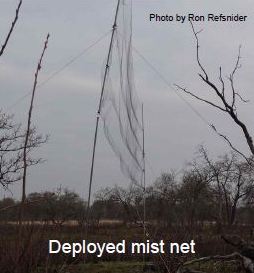
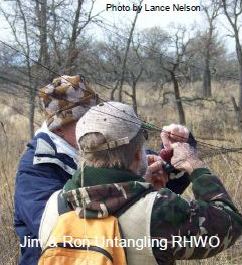
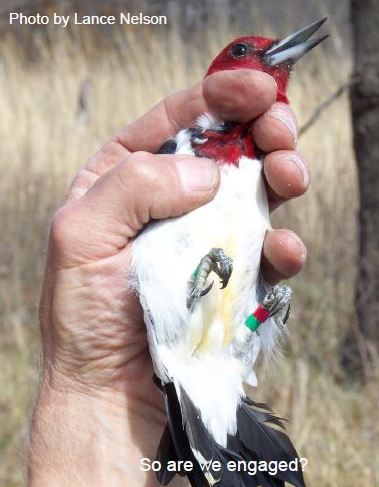
Capture data are collected on the bird such as weight, wing and tail length, eye color and plumage notes. In addition, the team is plucking five breast feathers that are sent to Avian Biotech International in Tallahassee, Florida to sex the bird using DNA. Before release each bird is banded with a Bird Banding Laboratory (BBL) numbered aluminum band, which can go on either leg. They are also banded with three colored plastic bands (yellow, green, blue, red, black, and orange). By using these bands, an observer with binoculars can positively identify an individual bird from the position and colors of the four bands on their legs. This ability to recognize individual birds will allow behavioral and demographic studies not possible before. For example, for the first time we will be able to determine mate and nest site fidelity of the birds that breed at Cedar Creek.
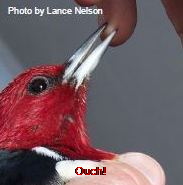
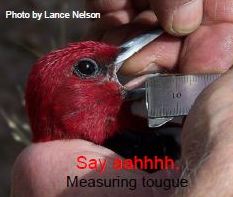
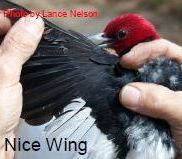
Completed Research
In the summers of 2011 and 2012, the Red-headed Woodpecker Recovery (RhWR) 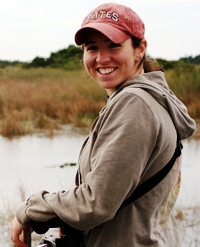 has provided funding for research conducted by graduate student, Ari Waldstein (right), at Cedar Creek Ecosystem Science Reserve. Ari's work has contributed valuable new information to our knowledge of the breeding biology of Red-headed Woodpeckers.
has provided funding for research conducted by graduate student, Ari Waldstein (right), at Cedar Creek Ecosystem Science Reserve. Ari's work has contributed valuable new information to our knowledge of the breeding biology of Red-headed Woodpeckers.
In the summer of 2012, Ari and her sister, Sasha, used our nest camera to take videos of nestling red-heads almost ready to fledge. It was quite difficult holding a swaying 30-foot pole with a tiny camera on the end and inserting the camera into the nest cavities but they succeeded.
The photos below are video stills of Ari and Sasha using the video camera, and of eggs and babies inside nest cavities. Click on this link to see the videos at YouTube.
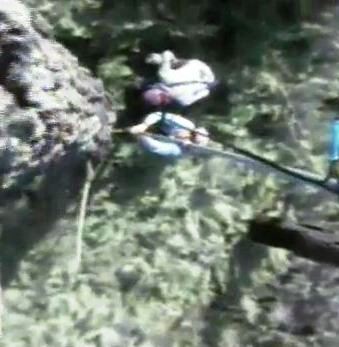
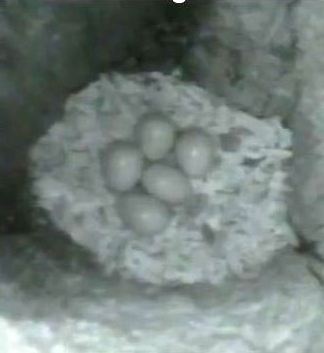
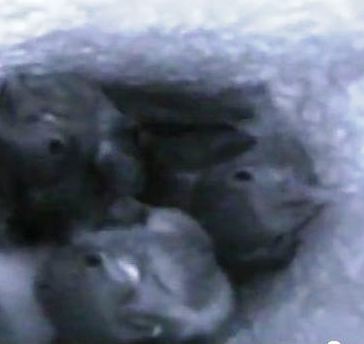
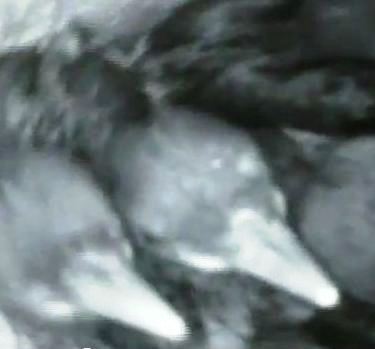
Previously, we had suspected the average clutch to be only one or two birds, given how small in diameter most nest limbs were. But Ari's research revealed between three and four young crammed into most cavities. That was quite a surprise.
And that's what research is all about!
Committee members also contribute to the research by searching for nests at Cedar Creek. In 2012, they were able to confirm 42 active nests. That's the most ever! And a big increase over 2011.
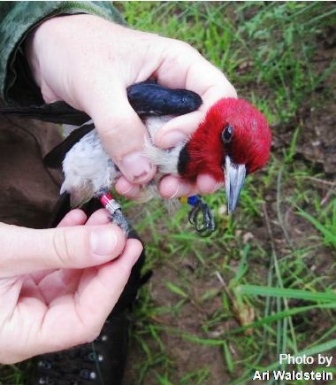
A Bird in the Hand....
Toward the end summer 2011, Ari successfully trapped and banded an adult Red-headed Woodpecker (right). This was our first banded bird! Nicknamed "Eve", she was captured in Burn Unit 401 not far from Highway 26. Eve was banded with yellow and blue plastic bands on the left leg and red and silver bands on the right leg. The color banding program is continuing. (see story above).
2013 Continuing Studies
Patrick Hartman (lead researcher) and Alan Watchuka, Advanced Placement Environmental Science Teachers at St. Louis Park Senior High School, conducted research on Red-headed Woodpeckers at Cedar Creek during the summer of 2013. They studied them by monitoring their nests using a newly acquired, capable of being put into the nest hole, mounted on an extension pole, capable of extending to 40 feet, to peek into the nests to determine when they laid their first egg, how many eggs were laid, when they hatched, how many survive and how many fledge. By diligently monitoring 20 of the 23 nests located during the year, greater knowledge was obtained that will help in their long term population increase.
Because Pat and Al were funded through an education grant to Cedar Creek Ecosystem Science Reserve (CCESR), they were able to bring some of their students out to Cedar Creek to observe their work. [Put in picture here.] The cavity camera used by Pat and Al gave a new 'look' into the life of our birds. An example: we have always known that our RHWO nest were often in small diameter cavities and, from what we could see in terms of fledging, it looked like they were only laying one or two eggs and fledging one or two young. The camera revealed that the birds are indeed laying clutches of four to five eggs and fledging more young than we expected. Pat and Al's students helped to analyze the data that they collected and consequently had experience observing data collection followed by data analysis.
Late in the summer of 2012, the RhWR observers were busy watching the Red-headed Woodpeckers attempting to raise second broods at the CCESR and so were slow to notice that most of the birds were gone. The acorn crop was virtually nonexistent and this was likely the primary reason that the birds migrated. The last woodpeckers to leave were the two pairs that raised two broods. While about 120 Red-headed Woodpeckers were present during the 2012 breeding season, none were at Cedar Creek from early September 2012 to May 2013. For months the savannahs, woods, marshes, and fields where redheads had foraged were eerily devoid of the life that the iconic birds had brought to the area.Late in the summer of 2012, the RhWR observers were busy watching the Red-headed Woodpeckers attempting to raise second broods at the CCESR and so were slow to notice that most of the birds were gone. The acorn crop was virtually nonexistent and this was likely the primary reason that the birds migrated. The last woodpeckers to leave were the two pairs that raised two broods. While about 120 Red-headed Woodpeckers were present during the 2012 breeding season, none were at Cedar Creek from early September 2012 to May 2013. For months the savannahs, woods, marshes, and fields where redheads had foraged were eerily devoid of the life that the iconic birds had brought to the area.
The first red-headed woodpeckers returned on May 9, 2013. More woodpeckers appeared to arrive the next two weeks. On average males returned 4 days earlier than females, but this difference was not statistically significant. Birds breeding for the second time (SY) returned on average 6 days later than older (ASY) birds and this difference was statistically significant.
The return of the woodpeckers gave the first opportunity to estimate the birds' annual survival. The Red-headed Woodpecker account in Birds of North America cites a survival rate of 62%. There were fifty adults color banded in 2012. Of the 50 color banded birds, 33 were seen in July or August 2012. Two were found dead along Anoka County Road 26 and several others probably died during the breeding season. None were seen after September. So about 33 color banded birds migrated elsewhere in late summer. In 2013 only 17 color banded birds returned. That would give a poor survival rate of 34%.
In 2012, there were about 60 pairs at Cedar Creek. In 2013 only 32 pairs were observed. What could account for the nearly 50% decrease in the number of breeding woodpeckers? Presumably, migration holds hazards that birds remaining on the breeding grounds don't experience. So some additional mortality would be expected. It could well be that some of the color banded birds are alive and well elsewhere. It is hoped that some will show up at Cedar Creek in coming years.
All the male woodpeckers that returned in the spring of 2013 returned to the same territories as in 2012 or moved just one territory. Of the six females that returned, two returned to the same territory (and the same nest), two moved one territory, one moved three territories, and one moved four territories. Thus, based on this small sample, it appears that female red-headed woodpeckers are more likely to move a significant distance from their previous year's territory than are males. This is typical of birds. In birds females generally disperse farther than males.
Only two pairs returned which had both birds color banded. These nested in the same holes as in 2012. Of the 17 color banded birds that returned in 2013, two of the birds were a surprise. These were birds caught early in the 2012 breeding season and no nest nor mate was observed in 2012. They may not have been noticed or they may have gone elsewhere during the breeding season.
In 2012, 80% of nests fledged at least one young. Thirteen of seventeen returning birds fledged at least one young, two birds nested and failed to fledge any young, and no nest was found for the remaining two.
In 2012 of the fifty color banded birds, ten were second year birds (birds in their first breeding season). So far in 2013, only two of sixteen birds we have banded are second year birds. So in 2012, about one-fifth of the population were "new" birds, but in 2013 very few birds are "new". The number of nests at Cedar Creek increased from about 42 in 2011 to 50 in 2012. The extra 16 birds could have been older (ASY) birds from elsewhere or (more likely) SY birds hatched at Cedar Creek or from distant nests. If only one-fifth of the birds were SY, some ASY birds must have moved to Cedar Creek from elsewhere. In 2013, the many unbanded birds are nearly all ASY birds. Presumably, all or nearly all of these were present in 2012 and were among the approximately 70 birds that did not get banded. A major factor in the decrease in population in 2013 appears to be a minimal recruitment of SY birds.
A Bird in the Hand....
Toward the end summer 2011, Ari successfully trapped and banded an adult Red-headed Woodpecker (right). This was our first banded bird! Nicknamed "Eve", she was captured in Burn Unit 401 not far from Highway 26. Eve was banded with yellow and blue plastic bands on the left leg and red and silver bands on the right leg. The color banding program is continuing. (see story above).
